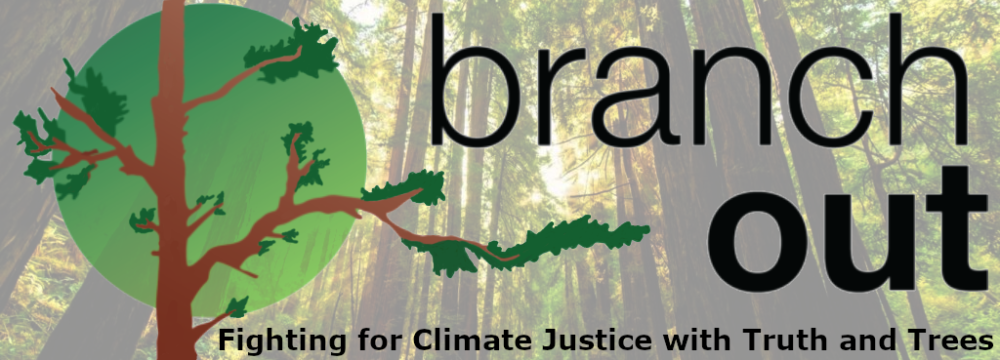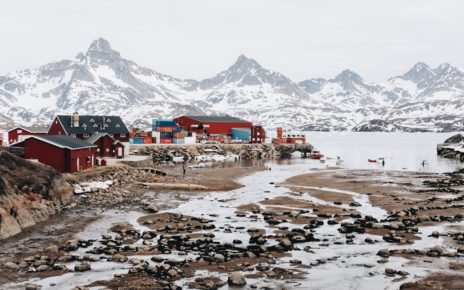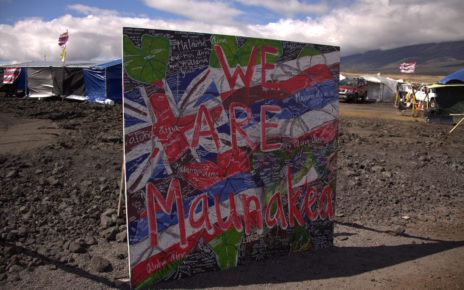By Yahya Apánii & Thomas Harun.
This article is Part 1 of 5 of the original Branch Out Series, “Greenwashing Counterinsurgency.”
In the introduction to this series, Branch Out illustrated how the billionaire Murdoch dynasty behind climate-denying NewsCorp is diversifying its tactics with unprecedented sales of soil carbon credits based on “holistic management.”
The man behind this theory, Allan Savory, admits he has “no expertise in climate change” and asserts that his method of carbon sequestration “cannot be peer-reviewed.” Still, he boasts that it is infallible, based on “300 years of European military experience of planning in immediate battlefield situations.” Lacking for qualifications in climate science, Savory makes up for that with an extensive history of his own in counterinsurgency warfare.
Following his graduation from the University of Natal in Apartheid South Africa in 1955, Allan Savory enlisted as a ranger with the British Colonial Service in what was then the Northern Rhodesia (now Zambia) Game Department. During his time in this role, he learned from Native informants the art of tracking large fauna such as elephants and lions. According to Savory’s own memoir, he pursued this position and launched his lengthy career in land management to prepare himself for guerilla warfare.
Rhodesia was a British settler-colonial state named after its founder Cecil Rhodes, who made a fortune during the diamond rush in South Africa in the late 1800s. In pursuit of diamonds and land, Cecil Rhodes committed the genocidal murder of millions of Southern Africans. He was furthermore responsible for the displacement of millions of Africans for the occupation by white settlers and the enslavement of millions of Africans on their own land. Cecil Rhodes is notorious as the architect of South African Apartheid.
While in the Game Department, Savory says he “read everything I could about guerrilla campaigns around the world throughout history” and “pumped mercilessly for information” his colleagues with a counter-insurgency background to learn about “tactics, strategies, political control or influence” and holistically “understand guerrilla warfare in depth and not merely from a military perspective.”

Due to his preparation, Savory was an early advocate of the need for the Rhodesian military to prepare for guerilla warfare. In 1960, he “wrote a memorandum to Sir Roy Welensky, Prime Minister of the Federation, urging that we train our Federal Army for guerilla warfare, including training army trackers.” Over the next few years, he began teaching Rhodesian soldiers his tracking methods at the invitation of the all-white Special Air Service.
Then in 1965, Allan Savory presented a paper to Rhodesian Army Headquarters suggesting the formation of a Guerrilla Anti-Terrorist Unit (GATU). The purpose of the unit was to recruit persons who would specialize in tracking and infiltrating liberation groups fighting against British occupation. The unit would be populated by soldiers in the all-white Special Air Service (SAS) and local African police. Savory’s plan was approved by the military, and deemed sensitive enough to be classified as top secret.
Although the unit would soon disband due to bureaucratic conflicts, Savory reformed it as the new Tracker Combat Unit (TCU) in 1968. As described by contemporary apologists, the TCU had the mission of “tracking down and annihilating” Native African insurgents, who were fighting to free their homeland of Zimbabwe from the white supremacist settler-colonial state of Rhodesia.

As the commander of Rhodesia’s top reconnaissance unit, Savory was the regime’s leading field officer in military intelligence and oversaw hundreds of special operations. It was in conjunction with his leadership in “tracking down like wild animals” and murdering Freedom Fighters that Allan Savory began to develop his method of intensive cattle grazing, which he would soon rebrand as ‘Holistic Management,’ strongly influenced by the social Darwinist theory of holism of Apartheid South Africa’s Architect, General Jan Smuts.
After the war, Allan Savory recounted his derivation of the grazing technique underlying this method from his combat experience, when he:
“…would track on land that had been grazed by Europeans, and three hours later I would fly to and track on land that had been grazed by natives…”
He noticed the difference in techniques between European and Native grazing. While European grazing was constant over place, African insurgents herded their cattle from field to field as they migrated across the land. Savory called this method “short duration grazing” and sought to ‘mimic’ it for Rhodesia, significant distortions of Indigenous pastoralism notwithstanding.
Before long, the Rhodesian Ministry of Agriculture hired Savory to train Conservation and Extension Service (CONEX) personnel in the application of his system. He also garnered corporate financing from the Rhodesian Cattlemen’s Association to conduct his method’s initial large scale field trials.
Savory’s grazing system was thus first implemented by wealthy Rhodesian settlers, with at least 150 ranches using his method by 1969. The government and industrial support he received coincided with a massive expansion of Rhodesia’s cattle industry between 1965 and 1972, which was seen as vital to the war effort.
This expansion was prompted by the need to offset British and UN sanctions on Rhodesia in 1965. The intensification of cattle ranching and illegal sale of “secret beef” became a highly successful method of sanction busting. Through the more efficient exploitation of Native grasslands, the Savory method supported the Rhodesian government’s military-economic program of increasing illegal beef exports. Like Savory’s work in military intelligence, much of this program was also classified and cloaked in secrecy.

The Rhodesian regime was not called a “cowboy” government for nothing. Wealthy ranchers influenced its policies in many ways, reflecting a lengthy Rhodesian history of promoting the settler cattle industry. As reported by the British Agricultural History Review:
“To market the young colony as an attractive destination for prospective white immigrants, the British South Africa Company-run government presented Southern Rhodesia as a cattle-man’s country. Dairy farming, it announced, would form an important adjunct to the colonial economy and play a vital role in its larger imperial ambitions.”
While settler ranchers received a litany of subsidies and increased their stocking rates via the Savory method, the government systematically excluded the Black majority from these programs. Despite whites making up only 4% of the population, by 1968, settler ranchers owned the majority of the country’s cattle.
With Rhodesian cattle management deepening wealth inequality and starvation, the Zimbabwe African National Union (ZANU) responded by “giving primacy to the prior political preparation of the people.” With this emphasis, the Second Chimurenga (‘liberation struggle’) was conducted as a People’s War.

A major element of struggle was the liberation of cattle from big capitalist ranches. Guerillas would enter the ranches under the cover of night and guide the cattle to communal lands freed of settler control. They would then slaughter the cows and quickly distribute the meat to everyone in the surrounding villages, providing much-needed relief for a population being starved under Rhodesian occupation. The small minority of white ranchers who supported the Guerillas had their farms and cattle left undisturbed.
As Savory’s grazing methods were increasingly being adopted by Rhodesian ranchers to illegally help their land sustain intensified sanction-busting beef exports, his tracking methods became a mandatory curriculum for the entire Rhodesian army. Based on Savory’s lessons, the army learned how to hunt down and kill the insurgents whose popular efforts to feed the starving population threatened settler ranches’ illegal profits.
In January 1973, one month after a particularly notorious farm raid, the new Emergency Powers Regulations gave Rhodesian forces the authority to collectively punish African civilians suspected of aiding and abetting liberation fighters. Abuses included severe torture, beatings, and confiscation of all cattle. Rhodesian forces routinely assaulted entire villages based on speculation, without any regard for facts.
Yet this strategy failed to deter the insurgents’ liberation of cattle, and so exploiting the counterinsurgency rhetoric of “winning over the masses” advocated by Savory, the government undertook forced relocations of at least 240,000 people from liberation-aligned villages into “protected villages.”

This campaign was accomplished through the mass theft of village cows and forced concentration of Black villagers into camps. Death rates from disease skyrocketed, and slave labor on plantations was mandated. Rhodesian propaganda framed this genocide as a “civilizing” mission, and by 1974 the insurgency was shrinking, violently cut off from its popular base of support.
By this time, Savory had become one of the leading politicians of Rhodesia. He had been elected to the Rhodesian Parliament in 1970 and continued to oversee TCU operations until 1973, when he left the military and resigned from the ruling Rhodesian Front party in protest of their overemphasis on the military dimension of counterinsurgency at the expense of political measures to win ‘hearts and minds.’
Savory went on to revive the ‘Rhodesia Party’ and become its new President, advocating for a diplomatic settlement with the explicit goal being “to ensure the long-term future of the European in Rhodesia through strong and just government.”
Savory’s outspoken advocacy for white supremacy is quite clear from his own exposition of the Rhodesia Party platform, as reported by the Oxford University Press in 1974: “that white economic superiority must be maintained, and that the immigration of skilled whites is necessary for the future of the economy; only the extreme difference between white and black wages should be lessened.”
Savory continued in his defense of colonial rule, arguing that “Good government means preventing the rise of agitators who stir-up the apathetic majority of Africans to demand self-government… Under this system (of the Rhodesia Party), there could never be an African majority rule.”
He had advocated for expanding eugenics, then being implemented in Rhodesia’s death camps. “Savory suggested that one avenue where new efficiency would be displayed was in the creation of a ‘Minister for Population Control’ who would handle the ‘population explosion’ among Africans,” the Oxford University Press reported.
He had also argued for segregation, as a so-called ‘moderate’ position: “RP believes in segregated living areas. Only those Africans who have to work in the towns, such as domestic servants, should be housed in the urban areas. Africans working in industry should be housed outside the towns and transported to work. There should be separate wards for the races in hospitals, and in education the state should provide separate schools. People should be allowed to discriminate in their private lives. With swimming pools, for example, a fee could be charged that would ensure that only whites would attend.”
Ultimately, even his ‘stand’ against military escalation was opportunistic. When it suited his party, Savory had denounced the RF’s request for permission to send troops into Zambia as “humiliating,” arguing that “We should have had Vampire jets flying over and made it quite clear to the Zambians that if they fired one shot they would get everything we had back. But our Government was so weak they couldn’t do it.”
As the war increasingly escalated over the next five years, Savory remained an influential figure in Rhodesian politics. The Rhodesian army, trained in his tracking methods, would go on to wage the largest anthrax assault in history, killing hundreds of Black civilians and thousands of their cattle, while Savory conducted ever larger experiments in ‘holistic’ cattle grazing to support settler ranches and Rhodesia’s illegal war economy.
Despite their parallel efforts, by 1977, the Second Chimurenga’s cattle liberation strategy had proven so successful that the economic viability of settler ranching in Rhodesia was “severely threatened by heavy stock losses.” In 1979, the BBC reported:
“Settler land owners and ranchers have lost vast areas which were formerly grazing land to the liberation forces. Large herds of cattle are reported to have been driven either to the liberated or semi-liberated zones. The few that remain in settler hands are now overcrowded.”
Rhodesia fell shortly thereafter.
When the Second Chimurenga overthrew white minority rule in 1979, Savory recounts that its leadership knew very well the central role Savory had played in opposing decolonization. The Selous Scouts alone – founded by Savory’s handpicked trackers as a beefed-up successor to the TCU – was notorious for massacring thousands of civilians throughout the war.

Savory was thus forced into exile by the new government of Zimbabwe, only to be hailed as an expert in ‘holistic’ cattle ranching by the new pro-Rhodesian government of another settler-colonial state.
~~~
In Part 2 of this series, we will follow Savory into exile where the newly-elected Reagan administration put him to work across the U.S. federal bureaucracy as it enacted massive environmental rollbacks, and Savory attained cult-like status as a “Messiah” promising good news of (holistic) ranching born again.
Version 0.9 of Branch Out’s executive summary of scientific evidence against the Savory Method can be accessed here, with a completed review to be published with the series’ conclusion.
The passages describing the Rhodesia Party platform as advocated by its President, Allan Savory, are quoted from an extensive 1974 Oxford University Press report, based on a combination of Savory’s direct quotes from the contemporary Rhodesian press and an interview with Journalist Helene Barnes.





Dear Yahya,
I hope you are aware of http://www.plantbaseddata.org. We are fans of your work and perhaps may collaborate. Please do get in touch.